fukushima
Latest
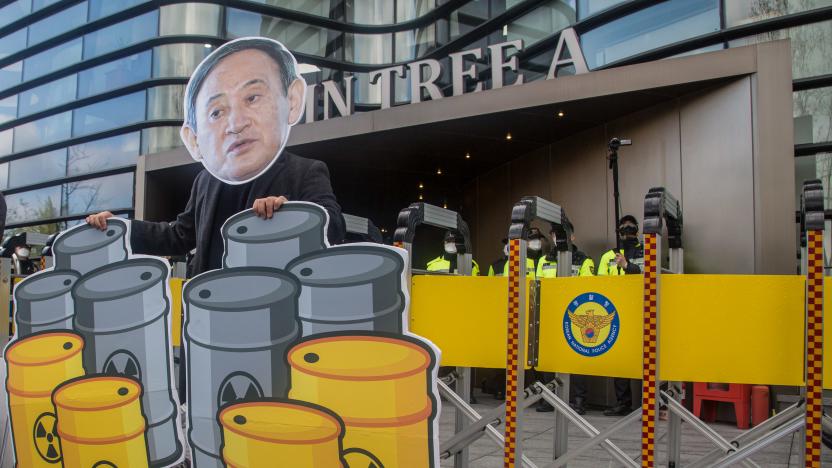
Fukushima's nuclear meltdown hasn't been the environmental calamity we feared
Despite the initial fallout from the Fukushima Daiichi incident the massive ecological disaster that many initially feared has, so far, failed to materialize.
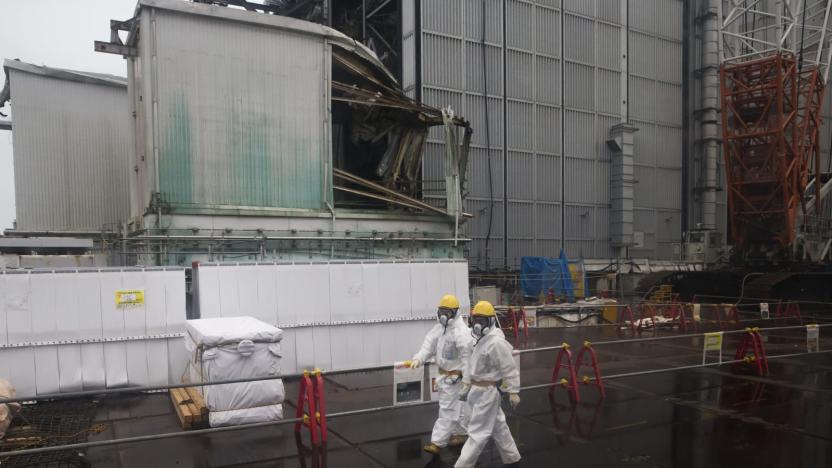
Japan has delayed the Fukushima nuclear plant cleanup again
There's been another delay in the plan to clean up the Fukushima nuclear plant. The Japan Times reported today that the country's government approved another revision to the cleanup schedule that will push removal of radioactive fuel rods from reactor Units 1 and 2 three years further down the road. This latest delay, which is due to newly uncovered damage in the storage pools, means that the cleanup is now six years behind schedule.
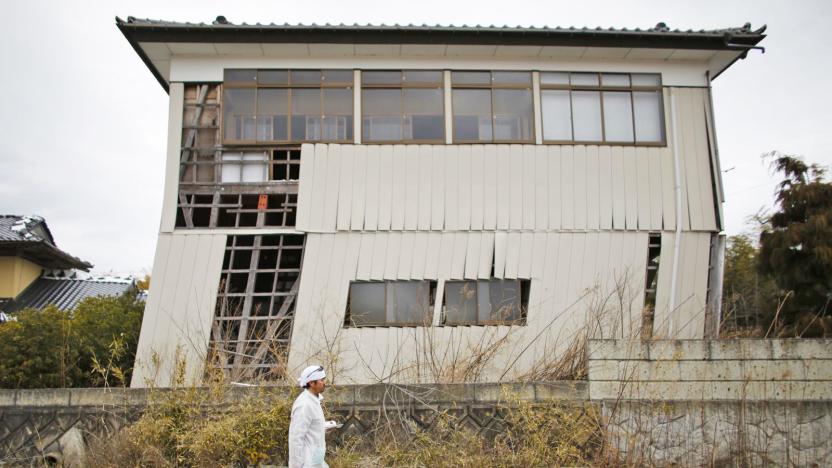
Study says Fukushima region is safe enough for people to return
Fukushima's ill-fated nuclear power plant may still be so dangerous that it kills robots, but residents are trickling back as officials decide that radiation levels are safe in some areas. But are they safe enough that you'd never have to worry about long-term effects? According to two researchers, the answer is yes. They've published a study indicating that the cesium radiation levels in Date, 37 miles away from the Fukushima plant, have dropped so quickly (60 percent just between 2011 and 2013) that residents shouldn't suffer any harm. In fact, they may be safer than usual. The median lifetime radiation dose (18 millisieverts) should be less than what you typically receive just by living on Earth.
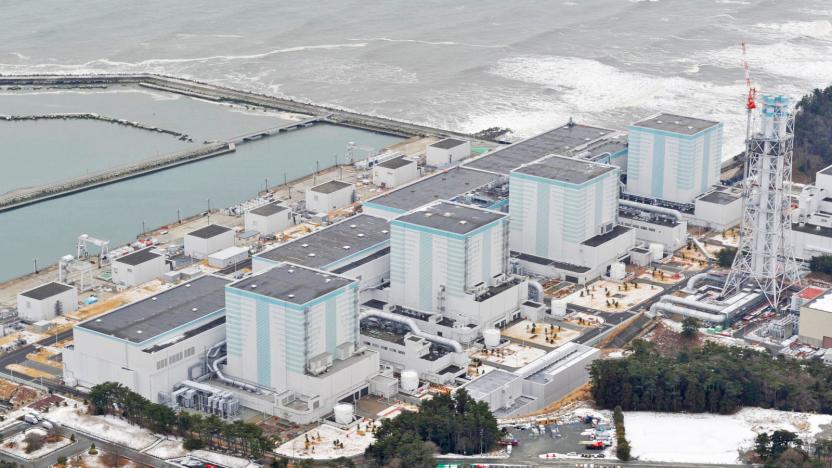
Robot probe no. 2 dies while exploring a Fukushima reactor
The second robot Tokyo Electric Power Company (TEPCO) sent into Fukushima's unit 2 reactor also failed to finish its mission. Earlier this month, the cameras of the first "scorpion" robot that ventured into the reactor malfunctioned after two hours due to extremely high radiation levels. Now, it's the machine's left crawler belt that stopped working (PDF) altogether, forcing TEPCO to cut off its tether and to leave it inside.
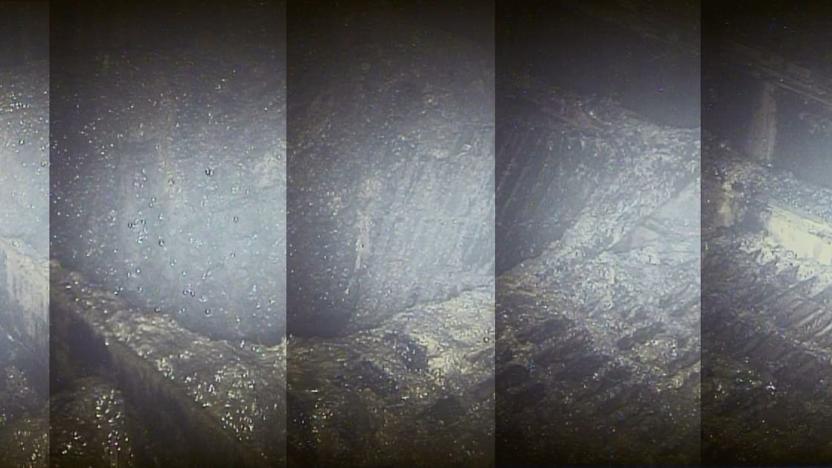
Fukushima reactor's radiation levels killed a cleaning robot
Tokyo Electric Power Co. (Tepco) wasn't kidding when it said the radiation levels inside Fukushima's nuclear reactor are the highest they've been since its meltdown in 2011. It had to pull out the robot it sent in to find the exact location of melted uranium fuel and to do preliminary cleanup inside the reactor, because it died shortly after it started its mission. Apparently, two of the machine's cameras suddenly became wonky, darkened and developed a lot of noise after merely two hours of scraping debris away. Those are all signs of extremely high radiation levels.

Fukushima radiation skyrockets after possible fuel breach
Radiation levels inside the damaged Fukushima nuclear reactor are over 100 times fatal levels, the highest they've been since the triple meltdown in March, 2011, according to operator Tepco. The company recently sent a camera-equipped robot into the reactor, which relayed images showing a meter-wide hole in the pressure vessel (above), with possible melted uranium fuel on a grating below. "It may have ... melted and made a hole in the [containment] vessel, but it is only a hypothesis at this stage," a company spokesperson told the AFP.

Even robots can't survive Fukushima's ground zero
Five years after an earthquake-triggered tsunami hit Japan's Fukushima Daichi nuclear power plant, there's still a tremendous amount of cleanup work left. The Tokyo Electric Power Co. (TEPCO), which runs the plant, has managed to clean out spent fuel rods from one building, but it's failed to reach others that have melted down. The incredibly high radiation levels at the site have even proven too much for five robots that were sent in to find those rods, Reuters reports. Even worse, it takes around two years for TEPCO to design robots suited to individual buildings at Fukushima.

ICYMI: Space X's near-landing, Fukushima's new robot and more
#fivemin-widget-blogsmith-image-602955{display:none;} .cke_show_borders #fivemin-widget-blogsmith-image-602955, #postcontentcontainer #fivemin-widget-blogsmith-image-602955{width:570px;display:block;} try{document.getElementById("fivemin-widget-blogsmith-image-602955").style.display="none";}catch(e){}Today on In Case You Missed It: Space X's latest Falcon 9 autonomous landing almost went according to plan. The rocket's satellite made it into orbit and the first stage booster set down on its drone barge but promptly fell over and exploded on account of a faulty landing strut -- because that's how rockets do.

Toshiba's wrecking-bot will dismantle Fukushima
The Japanese government plans to begin disassembling parts of the Fukushima-Daiichi power plant next year, beginning with the removal of some 566 fuel rods from the crippled number 3 reactor. But rather than send human technicians into the radiation-soaked reactor (and certain death), Toshiba unveiled on Monday a remote controlled robot that will do it for us.

Japan to restart nuclear power tomorrow after energy prices soar
It's been four years since an earthquake and tsunami knocked out the nuclear reactor at Fukushima, causing a meltdown and mass evacuation of the local area. The tragedy eventually saw the shut down of all of the nation's nuclear power plants, with the last facilities closing down in late 2013. This week, the country is going to start one of them back up: tomorrow, Japan will switch on reactor No.1 at the Sendai nuclear power plant.

Fukushima nuclear reactor will get mapped with subatomic particles
Scientists from Los Alamos National Lab have discovered how to look through and map just about anything with a new process: the science-fictionally sounding muon tomography. Even in places like the highly radioactive Fukushima reactor, the method doesn't require any disassembly or any need for x-rays or ultrasound. Instead it logs the movement of muons (of course), a radioactive subatomic particle that exists, well, everywhere. Two giant aluminum sides are put either side of whatever needs looking into, and the system measures the trajectory of these muon particles. From this, the scientists are able sketch the object, given enough of the tiny things.

Japan is building a huge 'ice wall' to block Fukushima's fallout water
No one can blame Tokyo Electric Power Co. (TEPCO) for the earthquake and tsunami that wrecked its Fukushima nuclear plant in 2011. Since then, however, the company has been accused of having a "weak sense of crisis" in responding to the accident's many knock-on effects. This includes the leakage of contaminated groundwater that passes under the damaged plant and into the Pacific Ocean -- something that is happening right now at a rate of 400 tons per day. This week, after more than a year of back and forth, TEPCO has finally managed to get the Japanese nuclear regulator's approval to create a massive wall of frozen soil to hold the groundwater back.

Alt-week 8.17.13: Fukushima's permafrost plan, the rodent afterlife and quantum teleportation
Alt-week takes a look at the best science and alternative tech stories from the last seven days. Two years on, the Fukushima nuclear meltdown is still causing problems, and the Japanese government is looking at a particularly cool way (literally) to address them. Similarly chilling is the prospect that 'dead' rats aren't quite as lifeless as you might think. Do rodents go to heaven? That, we can't answer, but what we can tell you is that new research shows we're edging ever closer to a quantum-computing future. This is alt-week.

Google Street View lets former Fukushima residents see the town they left
It's been more than two years since the tragic Eastern Japan tsunami and resulting Fukushima Prefecture nuclear plant crisis, but many of those who lived in affected areas still can't return: witness the 21,000 residents of Namie, who had to evacuate and haven't been back since. Thanks to a newly published Google Street View run, those former residents can once more see the town they had to leave. The 360-degree imagery shows Namie in the deserted state it faces today, with little recovery work done or possible. Google's photos can't accelerate the recovery process, but Mayor Tamotsu Baba views them as an incentive to eventually return -- and a better way for the rest of the world to understand the tsunami's long-term effects.

Toshiba tests robotic quadruped for nuclear plant inspection, hopes to help clean up Fukushima
The cleanup efforts at Fukushima's nuclear facility are been peppered with robotics: packbots, a refitted TALON, even a UAV - but Toshiba figures it could use at least one more. The firm's contribution is known only as the Quadruped walking robot, and it looks somewhat like Boston Dynamics' AlphaDog. Shuffling along on four double-jointed legs, the Quadruped can traverse uneven terrain and stairs at 0.6 mph, and is capable of exploring uninhabitable and irradiated areas for two hours before requiring a recharge. A second robot rides on the Quadruped's back, and can explore tight spaces for up to an hour when tethered to the its mentor. Toshiba is outfitting the duo with cameras and radiation dosimeters, and hopes to use them to help officials survey the damage in the plant's deadlier corners. Check out the machine's official press demonstration in the video after the break.

Bunnie Huang builds open-source geiger counter to help Japanese civilians
Chumby co-creator Andrew "Bunnie" Huang was so moved by the Japanese Earthquake and Fukushima meltdown that he felt compelled to help out. Teaming up with nonprofit organization Safecast, he started work on a radiation monitor that was suitable for everyday civilian use, rather than it remain the sole province of officials. As well as its readings being able to stand up to scientific scrutiny, Huang's counter had to remain functional after a natural disaster, last for ages and be small enough for people to carry around. When he had finished building the reference design, he open-sourced the design so companies like Medcom and individuals could build their own. If you'd like to dabble in the arts of radiation monitoring, head on down to the source link for a fascinating insight into how it's done.

Toshiba's radiation spotting camera means the end of 'nuclear hotspot hide and seek'
Toshiba's developed a camera that will take the guesswork out of finding radiation hotspots. Since the deadly particles / waves gather together in clumps, cleanup crews have to hunt around blind using geiger counters. The "Portable Gamma Camera" overlays data from a radiation sensor onto a live picture -- areas shaded with red pixels have high radiation, yellow and green is medium and blue is low. Simply point it where you think the trouble is and it'll show you exactly where to avoid. A prototype was used during the initial stages of the Fukushima cleanup and this model's around half the size and it can even run on batteries -- giving you three hours of lifesaving radiation detection.

Google's new Street View feature provides eerie glimpse of post-tsunami Japan
Google has put the devastation of March's Japanese tsunami in hauntingly stark relief, with the release of a new Street View feature that covers the country's most ravaged regions. It's all part of an initiative to "digitally archive" the aftermath of this year's earthquake and tsunami, with Street View images captured across some 44,000 kilometers of Northeastern Japan. The panoramic, 360-degree photos cover both inland and coastal regions, allowing users to retroactively trace the path of destruction across Fukushima and other areas, while placing them at ground level amidst a graveyard of battered homes and abandoned buildings. Google hopes this archive will help scientists to gain a better understanding of the damage wreaked by natural disasters, while preserving the memory of those who suffered most. It's viscerally eerie, powerful and, above all, tragic. Be sure to check it out at the source link below.

Cyberdyne turns its HAL exoskeleton into an anti-radiation suit
The original Hybrid Assistive Limb (HAL) suit was designed to help those with muscle diseases, but it's now been upgraded to cope with a very different type of problem: handling radioactive substances. One of the few wearable materials that can stop radiation is tungsten, which is extremely heavy: a typical tungsten vest weigh up to 132 pounds. When worn in conjunction with a HAL exoskeleton, however, a vest can be worn for lengthy periods without causing fatigue -- potentially allowing greater access to hazardous sites like Fukushima.

Fukushima technician gives behind-the-scenes look at the cleanup operation
New details about the robotics deployed to help clean up Japan's Fukushima nuclear plant have emerged, thanks to a series of blog posts penned by an anonymous technician. Known only as 'S.H.', the blogger wrote of the effectiveness of the donated iRobot Packbots and Warriors (despite their prolonged exposure to electronics-damaging radiation), while criticizing the Tokyo Electric Power Company for what he saw as inept supervision, unreasonable schedules and disregard for technician safety. S.H., who helped retrofit a vacuum cleaner onto a robot to collect radioactive dust, also revealed technical details about the robots, explaining that they were manipulated with a PlayStation-style controller via a Panasonic Toughbook and that the devices were most effective in pairs, which allowed for better wireless connectivity and faster emergency response. The site was taken down after it began circulating on Twitter but IEEE kept and translated the posts, available for your perusal at the source link, below.











